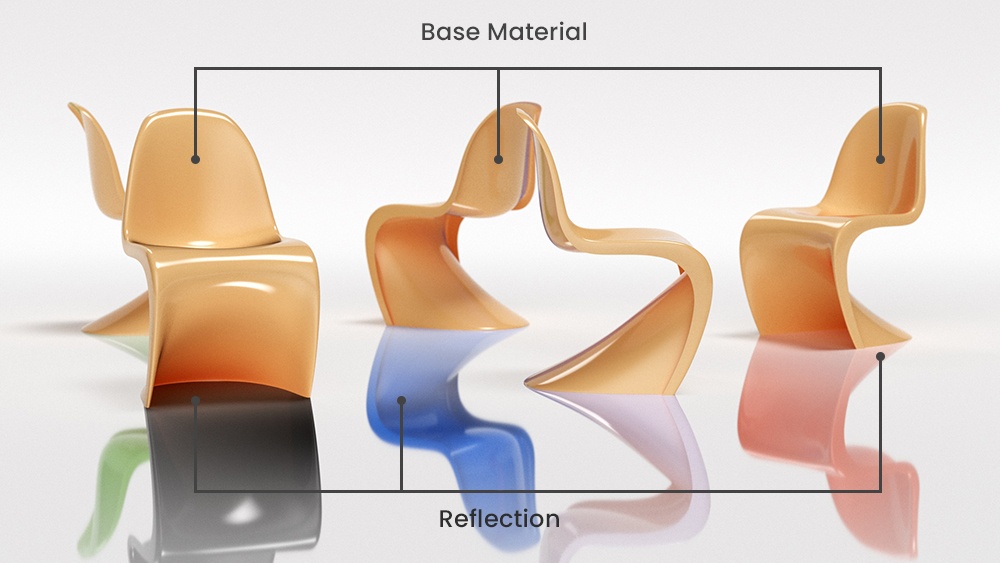Page History
...
| Section | |||||||||||||||
|---|---|---|---|---|---|---|---|---|---|---|---|---|---|---|---|
|
...
On the first render, it is absolutely visible that all the walls, the ceiling, and the teapots have been rendered in some light brown (pale pumpkin) color, although they have a light-gray material assigned. This is because of the Color Bleeding, which is generated by the GI calculationthe GI calculations.
On the second picture, the scene is rendered with a VRayOverride GI material assigned to the Floor.
...
Example: Using the Reflect material
The scene used in the following examples is very simple and contains four boxes five chairs and a light source in a studio type environment. Each box chair has a VRayOverride material assigned, but only the Base material is active. The rendered boxes have identical diffuse The rendered chairs are the same in their diffuse colors and reflections.
...
| Section | |||||||||||||||
|---|---|---|---|---|---|---|---|---|---|---|---|---|---|---|---|
|
As you can see now, Now each of the boxes chairs has a different material assigned in their VRayOverride Reflect material. The first one has a red green diffuse color, the middle two have green, and second one has black, the third one has blue, the fourth - purple, and the fifth has a red diffuse color. V-Ray uses those materials when the objects are seen in reflections. In our scene, both the ground and base material for the boxes are reflective surfaces. Notice that the green reflections from the middle cubes are visible on the right cube as well.
...
, the environment is actually a reflective surface, so the chairs are being reflected. On the other hand, you can also notice that the base material of the chairs is also reflective, and the fourth chair is seen with its Override Reflection material in the middle chair.
| Section | |||||||||||||||
|---|---|---|---|---|---|---|---|---|---|---|---|---|---|---|---|
|
| Anchor | ||||
|---|---|---|---|---|
|
...
Example: Using the Refract material
The next render is slightly even more complex and includes two thin glass boxes in the foreground. The VRayOverride Refract material is activated, and each box has a different refract material (diffuse cyan, yellow, and magenta) assigned. V-Ray uses these materials when the material is viewed through a refractive surface such as the glass.as the chairs' Override Refraction Material is activated as well. From left to right follow: a blue and a red diffuse color. Those materials are set so that when seen through refraction, V-Ray considers and renders the objects with them. As you can see the Reflection materials are still affecting the render image.
If you take a Note the Reflect materials are still enabled and affecting the render image. A closer look at the glass chairs' edges will show red and blue reflections from the left and right boxesyou will notice the green reflection, which is actually the reflection material of the right chair. While V-Ray had been tracing the rays on the glass chairs' surfaces, those polygons on the edges had first captured a reflection, hence the traces of red and blue.
...
so that's why there are green traces.
| Section | |||||||||||||||
|---|---|---|---|---|---|---|---|---|---|---|---|---|---|---|---|
|
Notes
...
| Fancy Bullets | ||
|---|---|---|
| ||
|




